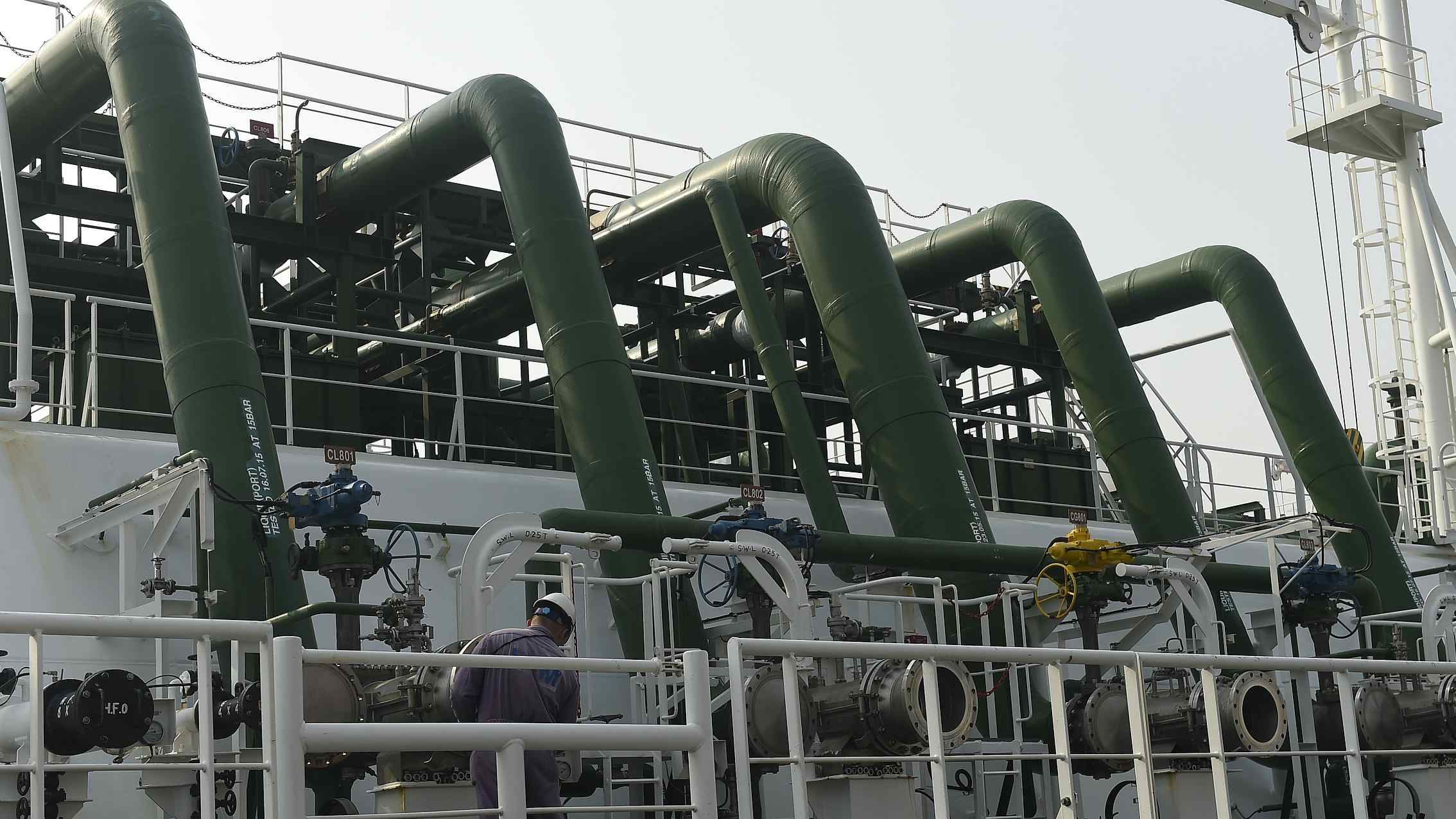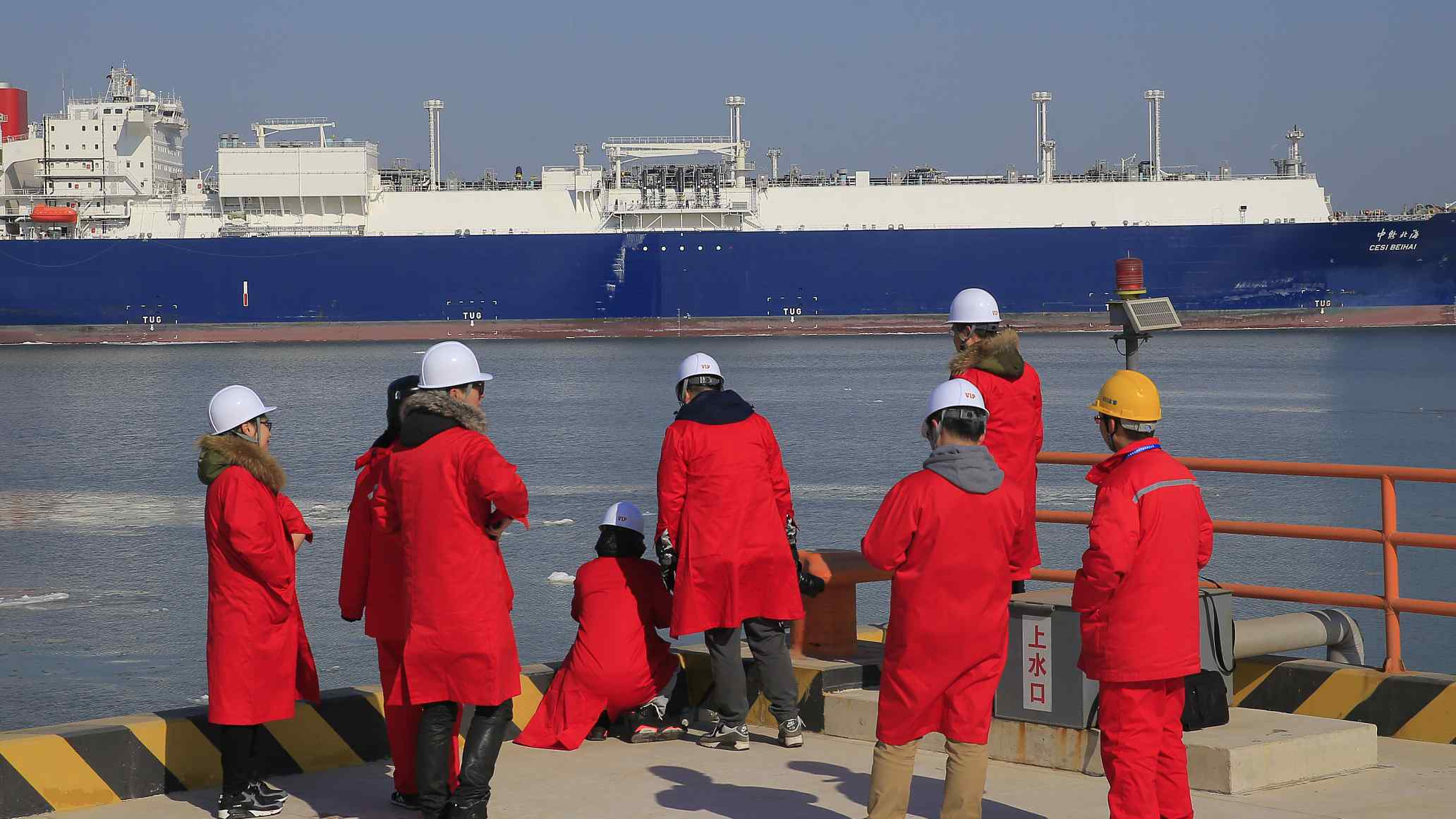
Business
12:05, 12-Jun-2018
Australia, US witness growing LNG trades in 2017
CGTN

Global trade in liquefied natural gas (LNG) continued to expand in 2017, and Australia and the United States were among the countries with the largest increases, US Energy Information Administration (EIA) reported on Monday.
EIA quoted the Annual Report on LNG trade by the International Association of Liquefied Natural Gas Importers (GIIGNL) as reporting that the global trade in LNG reached 38.2 billion cubic feet (about 1.1 billion cubic meters) per day in 2017, a 10 percent increase from 2016 and the largest annual volume increase on record.
In 2017, there were 19 LNG exporting countries and 40 LNG importing countries. Besides Australia and the United States, several other countries also increased LNG exports in 2017.
Asian countries led the growth in global LNG imports, accounting for 74 percent of the increase in 2017.

The ship from Australia successfully docked at the terminal of Sinopec Tianjin LNG Terminal. /VCG Photo
The ship from Australia successfully docked at the terminal of Sinopec Tianjin LNG Terminal. /VCG Photo
Japan remained the largest LNG importer in 2017. China had the largest growth in LNG imports globally and became the world's second-largest LNG importer in 2017, surpassing South Korea. LNG imports also increased in South Korea.
Europe increased its LNG imports, primarily in Spain, Italy, Portugal, France and Turkey.

The LNG Sakura liquefied natural gas tanker sails past a container terminal as it arrives at Tokyo Gas Co.'s Negishi LNG terminal in Yokohama, Japan on Monday, May 21, 2018. /VCG Photo
The LNG Sakura liquefied natural gas tanker sails past a container terminal as it arrives at Tokyo Gas Co.'s Negishi LNG terminal in Yokohama, Japan on Monday, May 21, 2018. /VCG Photo
LNG imports in South America (Brazil, Argentina, Chile and Colombia) remained virtually unchanged from 2016. In North America, Mexico's LNG imports increased by 17 percent as the country continued to rely on LNG supplies amid declining domestic production and construction delays in infrastructure connecting the Mexican domestic grid to natural gas pipeline exports from the United States.
LNG imports into the Middle East declined by 9 percent, primarily to Egypt and the United Arab Emirates.
Growth in LNG trade was driven in part by new liquefaction capacity commissioned in Australia, the United States and Russia. The world's first floating liquefaction plant, Malaysia's PFLNG Satu, was also commissioned in 2017.
Source(s): Xinhua News Agency

SITEMAP
Copyright © 2018 CGTN. Beijing ICP prepared NO.16065310-3
Copyright © 2018 CGTN. Beijing ICP prepared NO.16065310-3